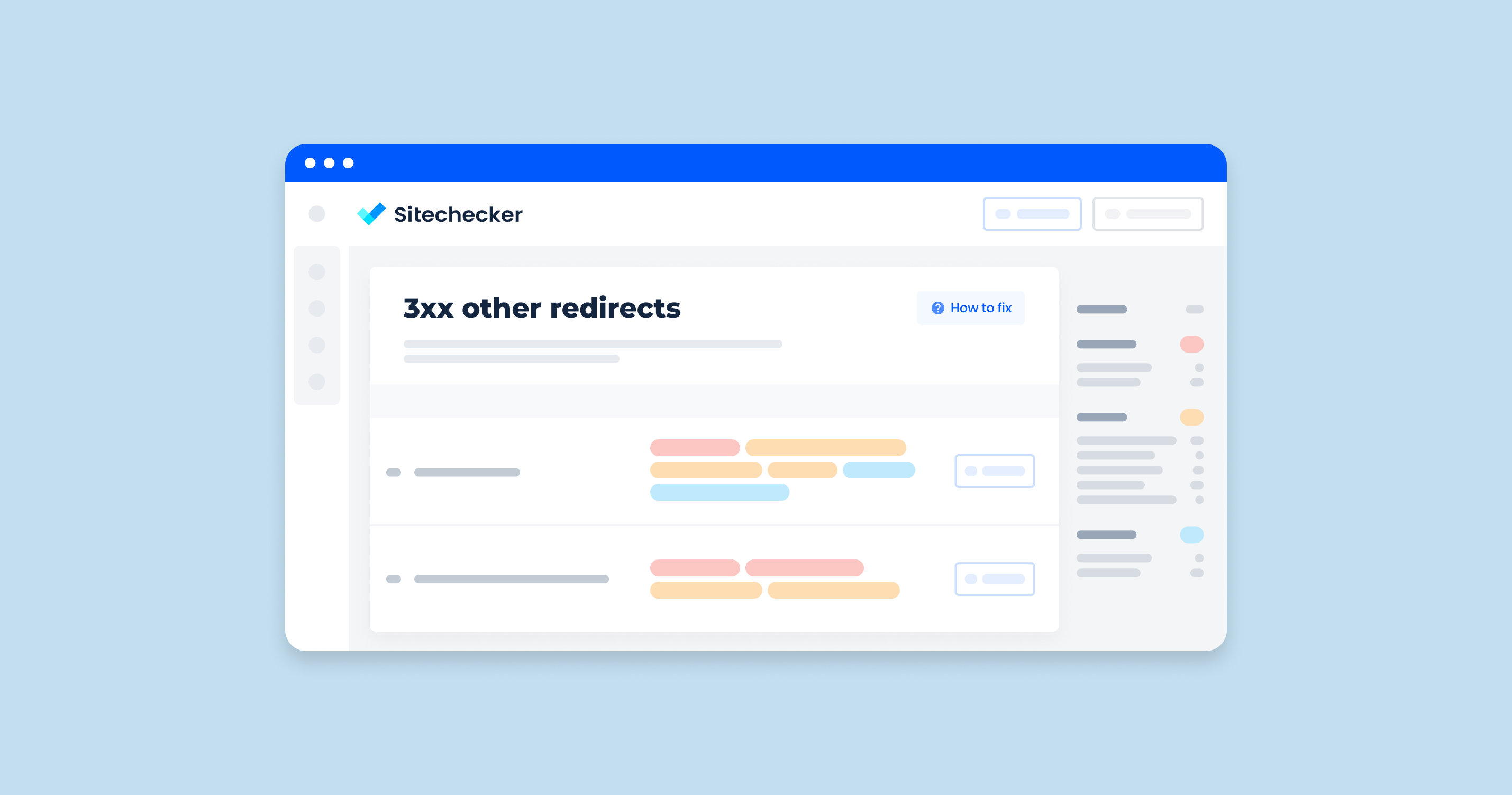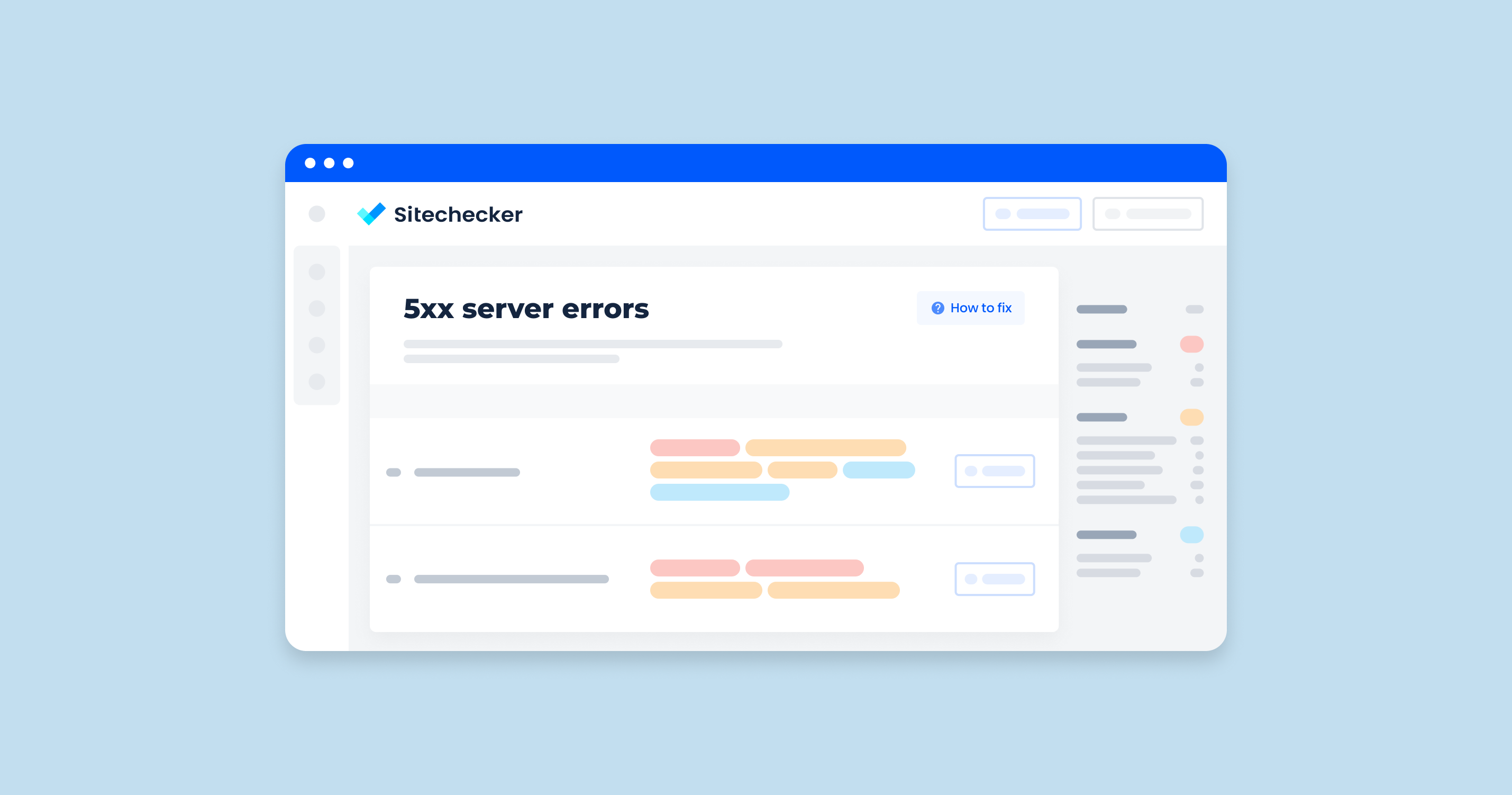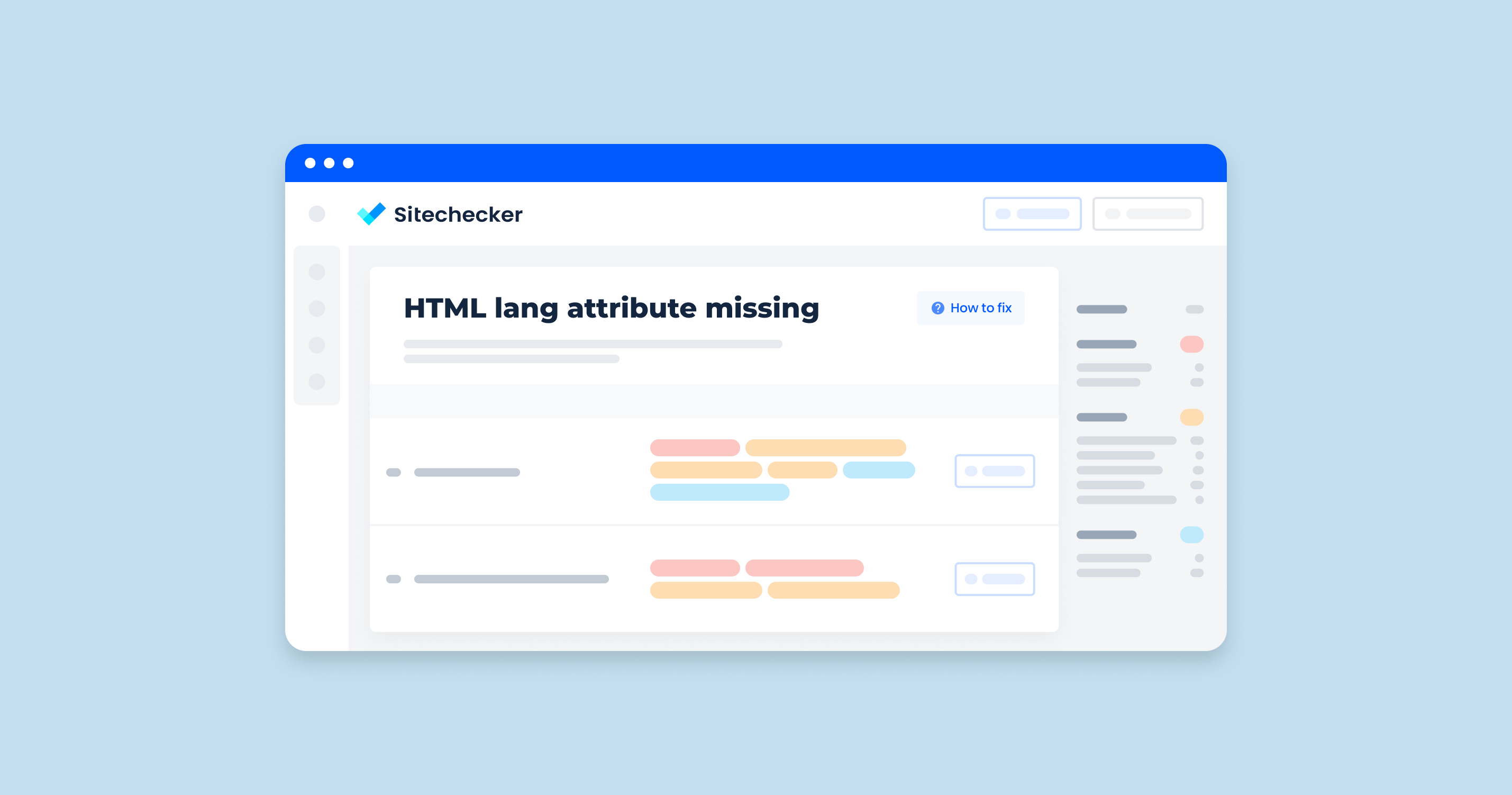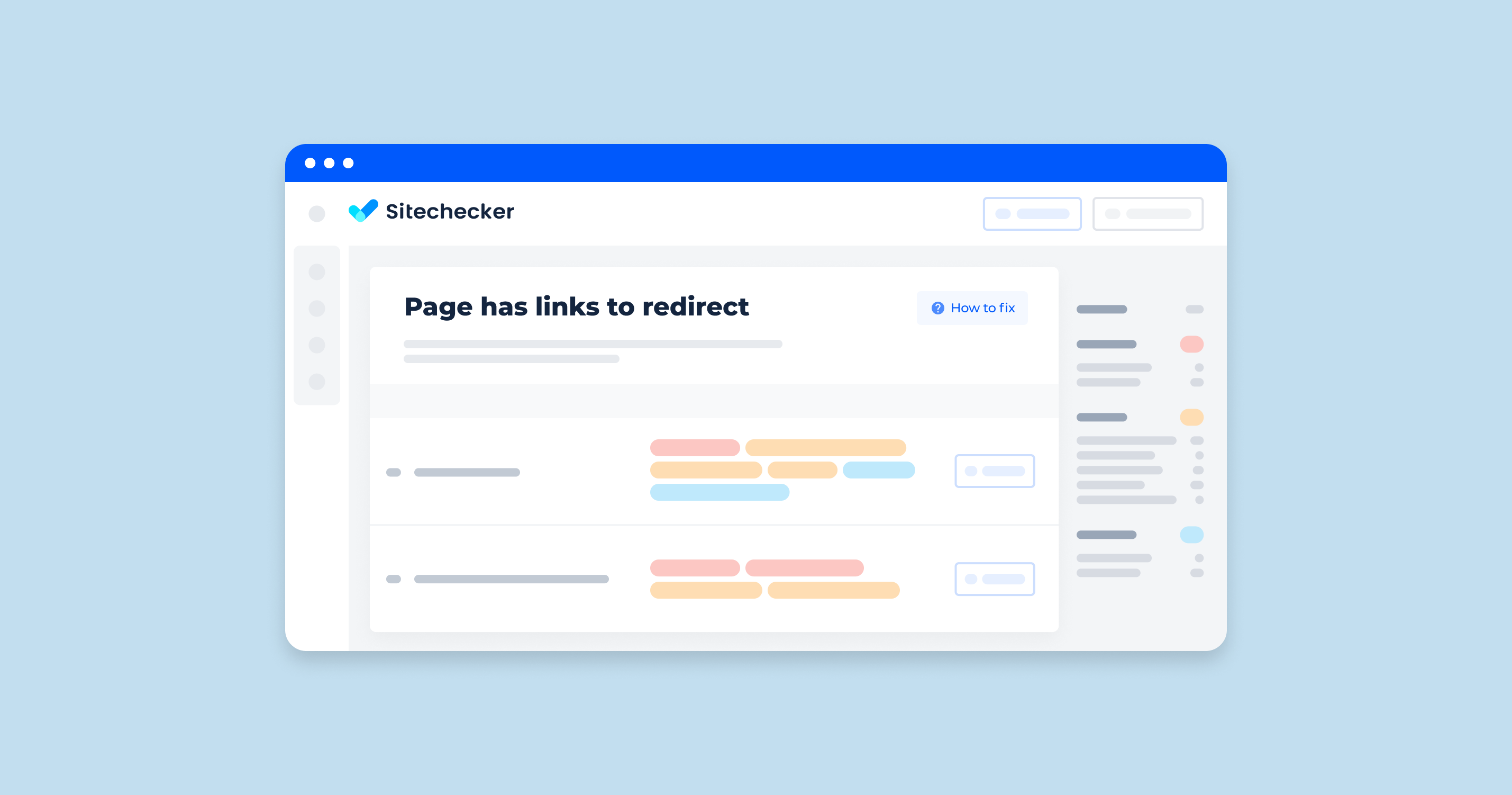What Does the ‘3xx Other Redirects’ Warning Mean in Site Audit?
The ‘3xx Other Redirects’ warning in a site audit indicates the presence of various HTTP 3xx status codes (redirections) on your website. These can impact SEO and user experience if not managed properly. It suggests reviewing and optimizing your forwardings to ensure they are necessary, correctly implemented, and do not create excessive chains or lead to broken pages.
The Importance of the Issue
Redirects have huge utility and there is nothing wrong about using them. However, they need to be implemented correctly, otherwise, the SEO success of the site can be severely impacted. The same is true about using multiple re-routes.
<…>While Googlebot and browsers can follow a “chain” of multiple redirects (e.g., Page 1 > Page 2 > Page 3), we advise forwarding to the final destination. If this is not possible, keep the number of redirects in the chain low, ideally no more than 3 and fewer than 5.<…>
Another issue is represented by broken redirects – these are links forwarding to dead pages (4XX or 5XX HTTP response code).
Example: Page A (301) –> Page B (404)
Consequently, the final links can’t be accessed by search engine bots and visitors alike. As a result, search engines wouldn’t crawl your site and visitors will abandon it as well.
3xx redirects are predominantly 301 or 302 but there are also less popular ones.
The 303 status code is equivalent in meaning to “see elsewhere” / “see other”. It is rather a notice than a true redirect – in web applications, where it is mostly used, it tells the application to look for the correct answer at a different link.
The meaning of the 304 status is “not modified” – a signal from the server that the page has not been altered since it was last accessed or cached. Hence, it also doesn’t resemble a true redirect.
As stated earlier, 303 and 304 are fairly uncommon. At the same time, 305-308 status codes can be particularly rare.
Substituting with 302 and meta refreshes isn’t a good idea, since, unlike 301 redirects, these won’t pass the rankings and search engine inspection. However, they might be useful, if the webmaster specifically doesn’t want to pass link equity from the old page to the new one.
For more information on each redirect, check Wikipedia entry for HTTP Status Codes.
How to Check and Fix the Issue
To effectively fix the issue in your site audit, follow these detailed steps:
1. Identify Redirects via Sitechecker
Ensure that each link forwards to the appropriate target URL, as intended and that none of the final links in the redirect chain yield a 4xx or 5xx error. Also, ensure that there are no more that 3 forwardings in a row in any chain since search engines might simply refuse to follow subsequent redirects.
Keep an eye on 3xx other redirects with Sitechecker.
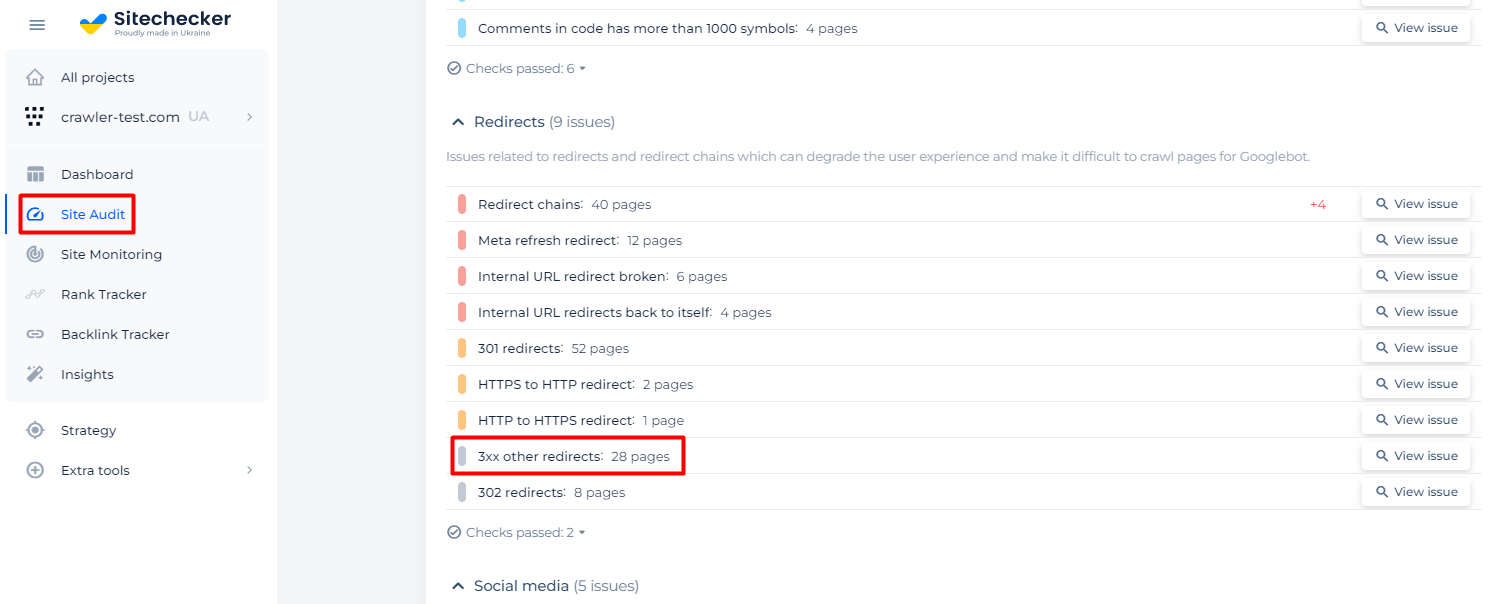
The service allows you to detect pages with 3xx redirects other than 301 or 302 and shows you a list of them.
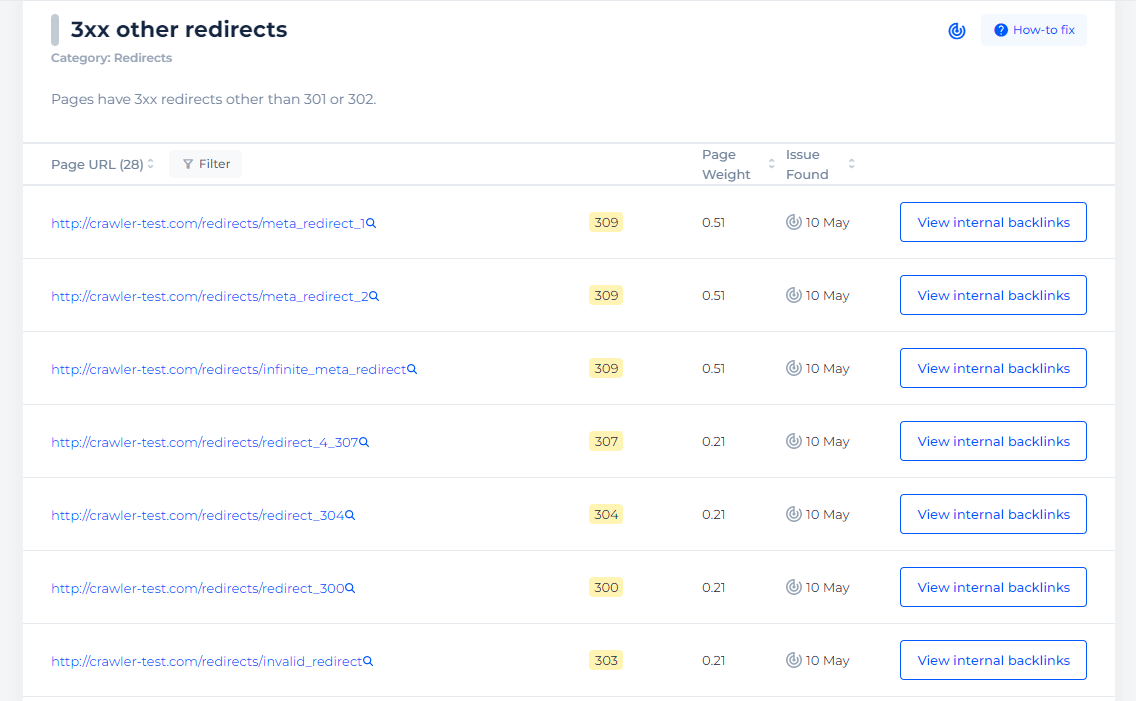
Detect pages with 3xx redirects
Crawl the website to collect all pages that have links with 3xx redirect responses
2. Evaluate Necessity
Determine if each forwarding is necessary. Redirects should serve a clear purpose, such as consolidating duplicate content, re-route outdated URLs to relevant content, or guiding users after a URL change.
Eliminate any redundant redirects that serve no functional purpose or lead to the same destination through multiple hops.
3. Use Correct Redirects
Permanent Redirects (301): Use 301 status code for permanently moved content. This ensures that link equity (SEO value) is transferred to the new URL.
Temporary Redirects (302, 307): Use 302 or 307 statius codes for content that is temporarily moved. Be cautious with these, as they do not transfer link equity effectively.
303 Redirects: Use 303 status code for scenarios like form submissions where you want the client to retrieve a different resource, typically using the GET method.
4. Avoid Redirect Chains
Ensure each redirect leads directly to the final destination URL without passing through multiple intermediate URLs. Update internal links and any external references to point directly to the final URL, bypassing unnecessary forwardings.
5. Fix Broken Redirects
Verify that all redirects point to valid, existing pages. Use tools like Broken Link Checker to identify and fix broken redirects.If a redirect points to a 404 (Not Found) page, update it to a valid URL or remove it if no longer necessary.
6. Monitor Regularly
Regularly perform site audits to detect new 3xx redirects and ensure they are properly managed. Monitor your website’s SEO performance to identify any negative impacts due to misconfigured redirects.
By following these detailed steps, you can effectively manage and optimize your website’s redirects, improving SEO, user experience, and overall site performance.
